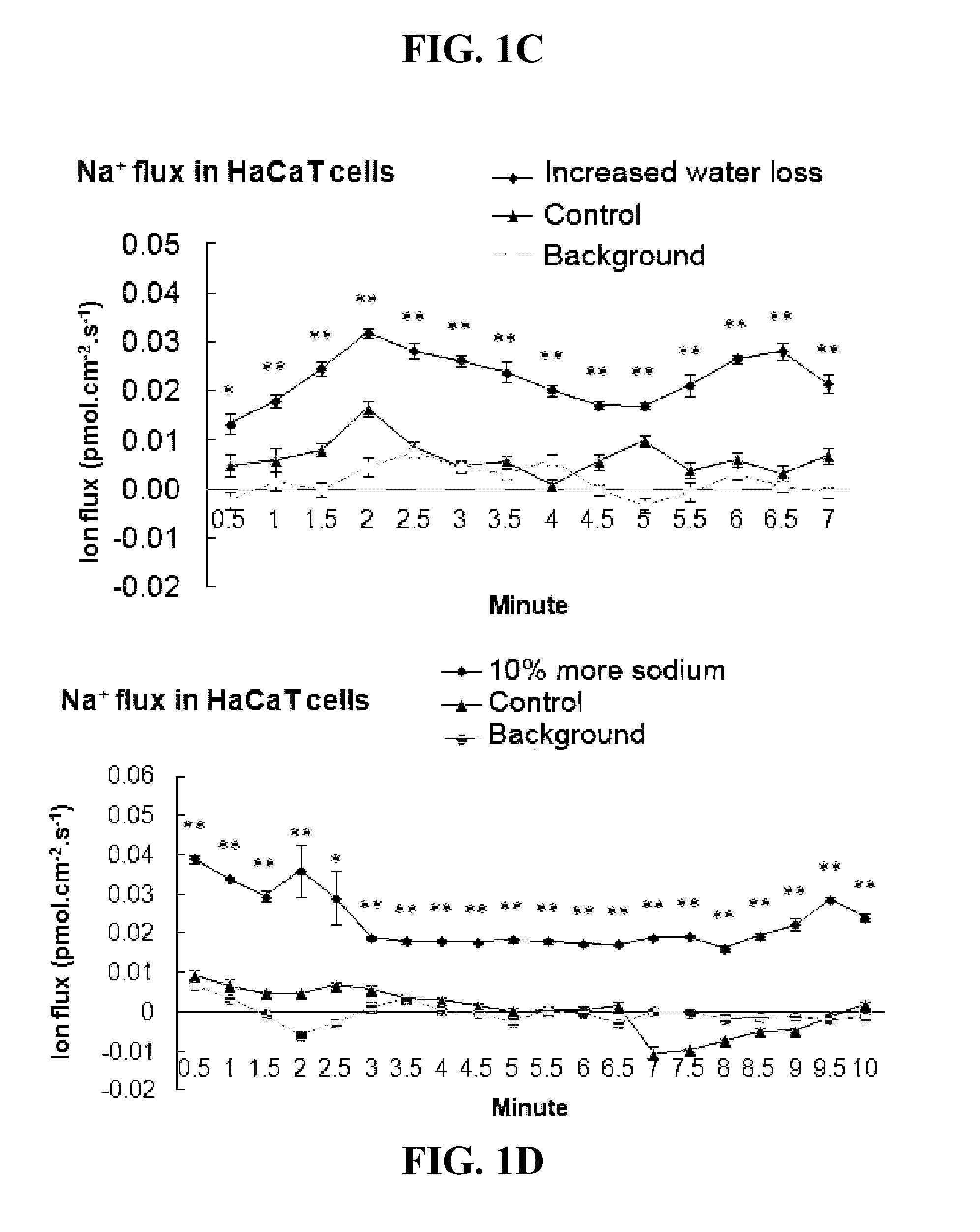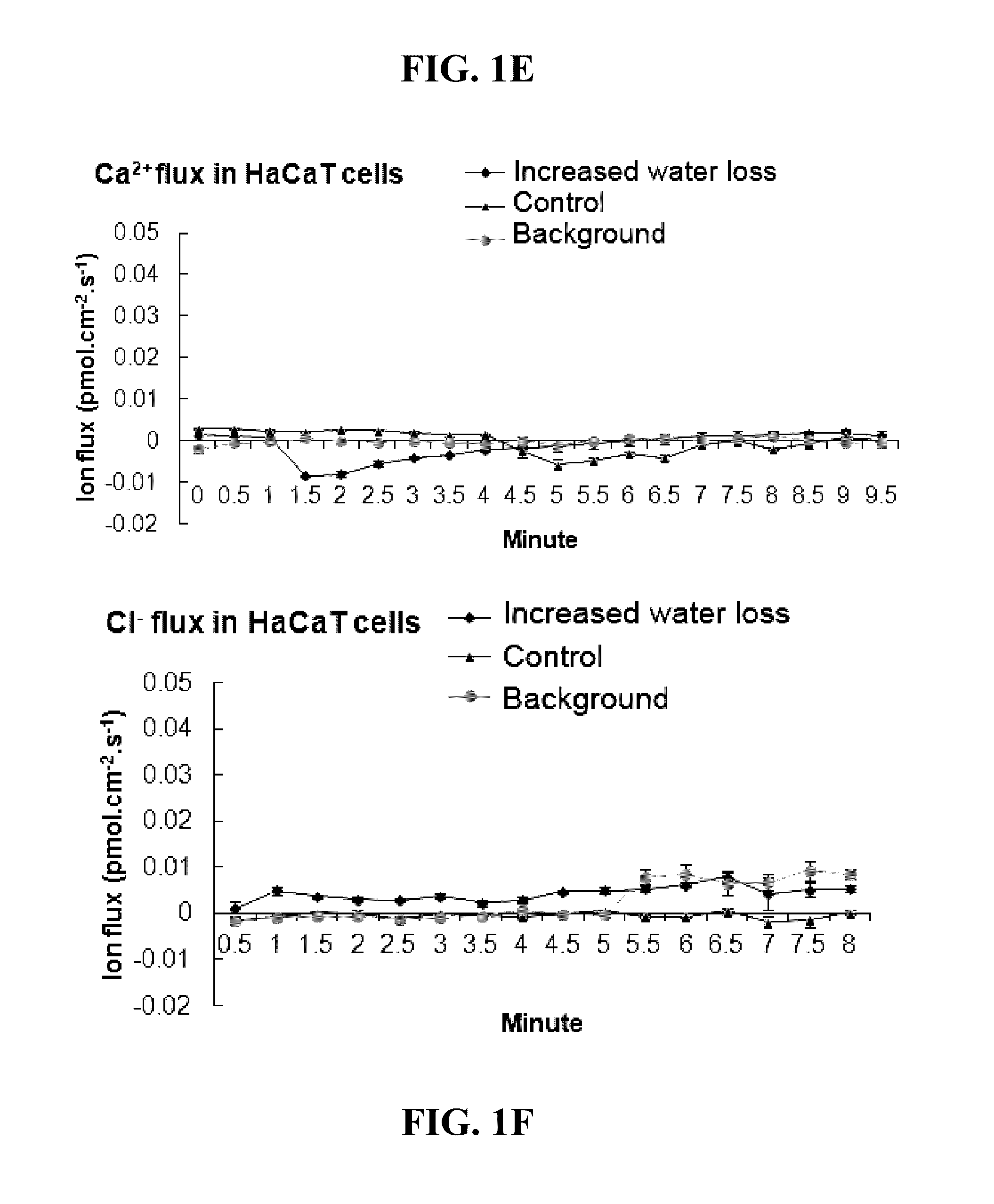Reducing cutaneous scar formation and treating skin conditions
a scar formation and cutaneous technology, applied in the field treating skin conditions, can solve the problems of excessive (hypertrophic) scar formation, lack of therapeutic options, and potential for dysregulation and overcompensation, and achieve the effect of reducing cutaneous scar formation
- Summary
- Abstract
- Description
- Claims
- Application Information
AI Technical Summary
Benefits of technology
Problems solved by technology
Method used
Image
Examples
example 1
Scar Reduction Via Blocking ENaC or ENaC Signal Transduction Pathway
[0059]This Example describes experiments conducted to evaluate the mechanism by which TEWL (trans-epidermal water loss) leads to pro-inflammatory cytokine expression and increased scarring. It was hypothesized that changes in epithelial hydration and sodium homeostasis are monitored through ENaC (epithelial sodium channel) and that this protein regulates downstream inflammatory pathways leading to fibroblast activation. Remarkably, blocking ENaC or ENaC mediated signal transduction with a commercially available sodium channel blocker (amiloride) or a COX-2 inhibitor lead to significant improvement in scarring. Given that compromised barrier function with increased TEWL is a major factor in many types of inflammatory dermatitis, these targets are useful for many skin diseases.
[0060]Increased trans-epidermal water loss results in higher sodium flux.
To estimate the change of sodium flux of skin, the sodium flux was mea...
PUM
| Property | Measurement | Unit |
|---|---|---|
| concentration | aaaaa | aaaaa |
| thickness | aaaaa | aaaaa |
| skin elevation index | aaaaa | aaaaa |
Abstract
Description
Claims
Application Information
 Login to View More
Login to View More - R&D
- Intellectual Property
- Life Sciences
- Materials
- Tech Scout
- Unparalleled Data Quality
- Higher Quality Content
- 60% Fewer Hallucinations
Browse by: Latest US Patents, China's latest patents, Technical Efficacy Thesaurus, Application Domain, Technology Topic, Popular Technical Reports.
© 2025 PatSnap. All rights reserved.Legal|Privacy policy|Modern Slavery Act Transparency Statement|Sitemap|About US| Contact US: help@patsnap.com



